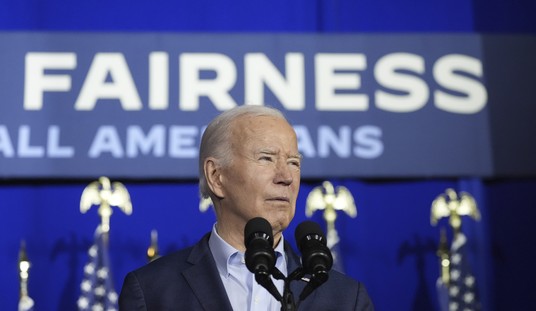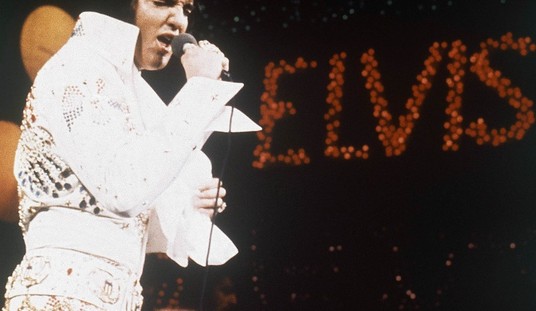The Shubert. The Apollo. Carnegie Hall.
So the “Snapple Theater Center” doesn’t provoke the same reverent awe as do the names of those famous New York City landmarks, but hey, a gig’s a gig, right?
Maybe Christina Crawford inherited more of her adoptive mother’s trooper spirit than she’d care to admit.
It’s so easy to imagine Joan Crawford growling, “Snapple, crapple! The show must go on!”
And so it does: the longrunning “Mommie Dearest” franchise, one angry daughter’s single claim to fame — first a blockbuster 1977 memoir, then a cult movie — is back in a rather downmarket iteration: A Conversation with Christina Crawford: Live and Onstage in Surviving Mommie Dearest.
Or rather, was. The show’s very brief run at the Snapple overlapped Mother’s Day.
After more than 30 years of telling all, what possible secrets could Christina Crawford have left to reveal about her infamous mom?
Well, now she’s claiming (sort of) that Joan Crawford murdered her husband Alfred Steele, the Pepsi CEO whose position the widow snatched for herself after his death.
Here’s Faye Dunaway reenacting the power grab in the aforementioned cult flick, Mommie Dearest (1981):
[jwplayer config=”pjm_lifestyle” mediaid=”41802″]

I like to think that’s how it happened.
I hate to think the other stuff is true, though.
Like how Joan Crawford would give Christina’s lavish Christmas presents away to orphans after the LIFE magazine holiday photo-ops were over.
(Although I do share the actress’s purported aversion to wire hangers, one exaggerated by the child Christina’s imagination. Having once blogged off hand that I hoped one day to replace all my wire hangers with padded ones, a longtime reader shipped me a huge cardboard box of the latter –all sorbet pastel silk and bows — after his grandmother’s death.)
Anyway, these old movie stars mean a lot to me.
My mother was named after Joan Crawford, because my grandmother — who so closely resembled Crawford’s lifelong rival, Bette Davis, that she won look-alike contests — whiled away her pregnancy compulsively watching Crawford films.
Amusingly, my mother was blessed with very thick eyebrows, which we jokingly attributed to all those “shop girl” late shows.
This was especially funny because my grandmother had plucked all hers off in an attempt to better replicate Davis’s early look, and they never grew back.
I got the “Joan” eyebrows too, but the Bette Davis face.
I really wish my grandmother had been a bigger fan of, say, Elizabeth Taylor…
My mother and I also shared similar birthmarks. Not somehow-alluring Liz Taylor moles, either.
When I complained about them, which I did from about age five onwards, my mother used to chirp:
But just think: if someone ever kills you, I can use it to identify your body.
[jwplayer config=”pjm_lifestyle” mediaid=”41801″]
If you ever got kidnapped, I’d hope they’d find your body right away because then at least I’d know you weren’t being tortured in a basement.
But then she’d reassure me that nobody would want to kidnap me anyhow, because we weren’t rich, like the Hearsts.
Because that’s why I worried so much: the Patty Hearst kidnapping was such a huge deal when I was a child.
So was the Chowchilla incident, when a schoolbus was hijacked and all the kids were hidden underground.
When I got older, I wondered why my mother had child abduction on the brain.
I’d assumed the whole kidnapping thing was a uniquely 1970s phenomenon, like hitchiking and hijacking.
Had weird scary things happened to children when she was growing up, too?
[jwplayer config=”pjm_lifestyle” mediaid=”41803″]
“I can’t tell you how many times I have been told in person and with letters that reading the book made people realize for the first time that they weren’t alone,” Crawford continued. When the exposé was published, she didn’t expect to become a poster child. But the book broke open certain taboos about the travails of the rich and famous, she says. “If there was abuse, it was seen as being part of the lower socioeconomic and racial strata. And the rest of the world was in complete denial.”
— Christina Crawford, The New Yorker, May 10, 2013
Christina is now the same age her adopted mother was when she died.
The thing Christina Crawford is too polite to mention is that she’s never seen a nickel of the film’s almost forty million dollars in receipts and with a production budget of five million, that’s a lot of nickels. When asked why she isn’t participating in the profits, she lets out a long, but not especially bitter laugh. “If I knew that,” she replies, “I would be a nice wealthy lady. It has to do with the way Hollywood keeps their accounting and it’s a minor sore spot, but there’s nothing I can do about it at the moment.”
The Hollywood shuffle is an ironic echo of Joan Crawford Steele’s last will and testament, which, after hashing out payments to her other adoptive daughters, housekeeping staff, and various charities, finally gets around to its tenth point buried just above Crawford’s final wish to be cremated. “It is my intention to make no provision herein for my son Christopher or my daughter Christina,” the will reads, “for reasons which are well known to them.” This final shakedown in effect sets up the financial parameters in which the memoir Mommie Dearest was born.
It’s pointed out that adapting an author’s property without paying a royalty cannot be above board, but Crawford says it’s not a point she’s litigating. “I know it isn’t,” she replies. “It’s just one of those anomalies of Hollywood. Things, as they say in the song, are not what they seem.”
Paramount Studios has also licensed a limited edition “Mommie Dearest” collectible doll, the kind that’s not meant for children.
It’s due out this summer, and comes complete with a little wire hanger.
Presumably Christina Crawford won’t be getting any royalties from that, either.
It’s impossible to imagine her mother letting Hollywood get away with such an arrangment, and hard to understand why Christina doesn’t sue.
It’s also hard for many to understand how three women can be kidnapped and held against their will for ten years.
Shortly before Mother’s Day this year, the world awoke to news reports of “the Cleveland house of horrors.”
Why didn’t those women try harder to escape?
Why didn’t anyone notice what was going on?
All these real-life crimes wear the trappings of fairy tales, the Brothers Grimm.
If the past is a “more innocent time,” where did those violent children’s stories come from?
(Noted one fellow: “Germany was quite obviously headed down a terrible road much earlier than is often supposed…”)
I don’t have children. Do they still learn these fairy tales?
For generations, the theories of concentration camp survivor turned child psychologist Bruno Bettelheim were conventional wisdom:
Bettelheim analyzed fairy tales in terms of Freudian psychology in The Uses of Enchantment (1976). He discussed the emotional and symbolic importance of fairy tales for children, including traditional tales at one time considered too dark, such as those collected and published by the Brothers Grimm. Bettelheim suggested that traditional fairy tales, with the darkness of abandonment, death, witches, and injuries, allowed children to grapple with their fears in remote, symbolic terms (…) [and] would better prepare them for their own futures.
It was only after his suicide that former students complained that nothing had quite prepared them for Bruno Bettelheim:
There are indications that at least the local psychiatric community knew exactly what was going on, and did nothing. Chicago analysts scathingly referred to the doctor as “Beno Brutalheim.” (…)
“I suspect that the main reason why it’s so hard to talk about the Bettelheim tragedy is this: in one way or another, he induced all of us to act in ways that we feel sick to think about now. This includes kids, parents, staff members, students and faculty at the University of Chicago, colleagues, and so forth.”
Just before my mother died a painful, too-young death from cancer a few years ago, she timidly asked me if “anything bad” had ever happened to me.
I knew just who and what she was talking about.
I said no. I lied.
Mother’s Day always falls right after my birthday, and my mother’s.
It is not my favorite day.
This year, I thought about the three girls — now women — freed from their Cleveland dungeon.
Two rushed into the arms of their families, and slept in rooms that reportedly hadn’t been touched since the day they disappeared. Sorbet pastel teddy bear shrines, inside their homes, and out.
For their families, this year’s was the best Mother’s Day ever.
One of the women, though, is refusing to see her parents.
I wondered what girl I’d have been.
Anyway, also just before Mother’s Day this year, I had to have one of those troublesome birthmarks removed. Cancer runs in the family and all.
And no great personal mythology crisis ensued, a bit to my surprise.
I barely felt a thing.













Join the conversation as a VIP Member